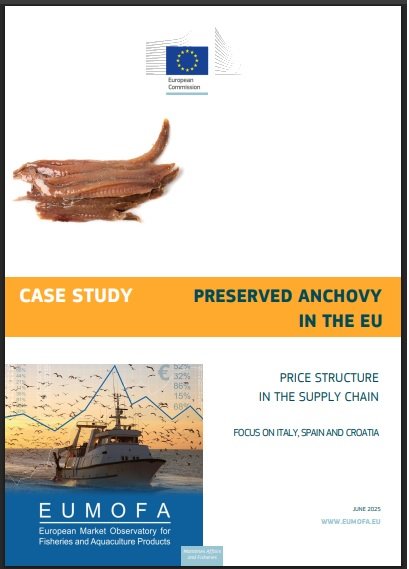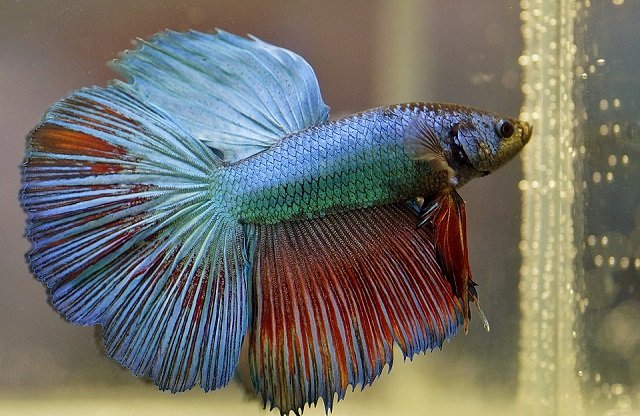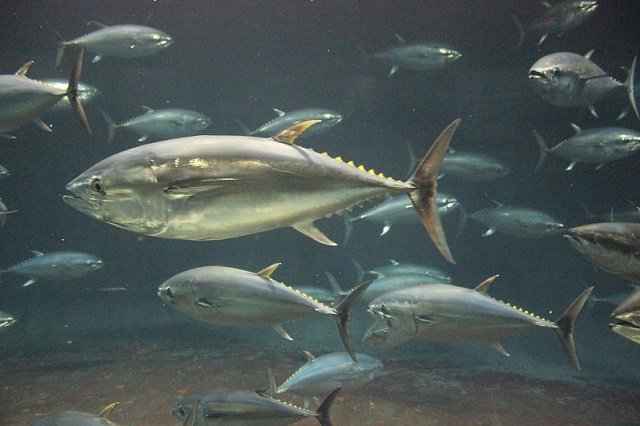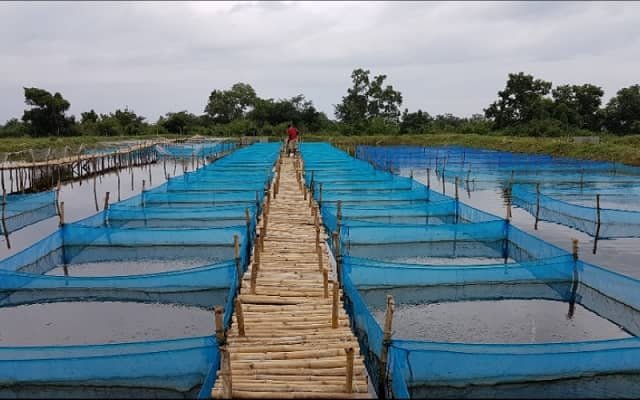
The anchovy, a fish that is small in size but “giant” in gastronomic and economic value, is the protagonist of a complex and fascinating market in the European Union. Although in the world of aquaculture we are more familiar with the Peruvian anchoveta (Engraulis ringens) as a key input for feed, the European anchovy (Engraulis encrasicolus) follows a very different path: that of direct human consumption, transforming into a gourmet product whose final price often raises questions.
A recent and exhaustive June 2025 report from the European Market Observatory for Fisheries and Aquaculture Products (EUMOFA) has focused on the preserved anchovy sector, analyzing in detail the supply chains of the three main European players: Italy, Spain, and Croatia. The findings not only reveal the strategies of each country but also unravel the mystery behind the high cost of this delicacy.
A global market with key players in the EU
Globally, the anchovy capture landscape is dominated by Peru, which accounts for 39% of the total volume. However, the study focuses exclusively on the European anchovy (Engraulis encrasicolus), where the map changes. In 2023, EU production reached 98,237 tonnes. Within the EU, the dynamics are clear:
- Spain is consolidated as the leading producer, with 46% of the total EU catches in 2023.
- Italy, a market with an enormous tradition and consumption, holds second place, although its catches have decreased by 38% in the last decade.
- Croatia has emerged as a key player, showing the most notable growth with a 36% increase in its production over the last ten years, now representing 20% of the EU total.
The supply chain puzzle: three countries, three strategies
The EUMOFA report highlights that one cannot speak of a single anchovy market, but rather of highly differentiated business models that respond to the economic and cultural realities of each country.
Italy: tradition, mass consumption, and import dependency
Italy is not only the second-largest producer but also one of the largest consumers of anchovies in the EU. Paradoxically, its national production is insufficient to meet its domestic demand, making it a massive importer, with imports exceeding its own production.
The key to its model lies in labor costs. The processing of anchovies (salting, hand-filleting, and packing) is a delicate and very labor-intensive task. To reduce costs, many Italian companies import semi-processed products (salted fillets) from countries with lower labor costs, such as Morocco and Albania, to carry out the final packaging in Italy.
Spain: leader in production and a dual market
Spain, as the EU’s top producer, supplies a large part of its market with national catches. However, its high domestic demand also forces it to be the EU’s top importer. Its market is characterized by an interesting duality of products derived from the same species:
Stay Always Informed
Join our communities to instantly receive the most important news, reports, and analysis from the aquaculture industry.
- The anchoa: the product obtained through a process of salting and maturation, preserved in oil.
- The boquerón: fresh fillets marinated in vinegar, a very popular semi-preserve.
This diversification allows it to cater to different market segments, from retail in supermarkets to high-end restaurants.
Croatia: the producer focused on exports
Croatia presents a business model radically opposed to Italy’s. As the third-largest producer in the EU, it exports almost its entire supply (96% in 2023). This results in a very low apparent national consumption, the lowest of the three countries analyzed. Its main export markets are other European countries, with notable shipments of salted and frozen anchovies to destinations like Albania, Italy, and Spain.
Breaking down the price: Where does the value of preserved anchovy come from?
Herein lies the main revelation of the study. Although the first-sale price of fresh anchovy destined for industry is relatively low (between 0.70 and 1.60 EUR/kg in Italy and Spain), the final product reaches prices of between 30 and 47 EUR/kg in supermarkets.
The value is not in the fish itself, but in its complex and costly transformation. The main components of the final price are:
- Material loss (shrink): The salting and filleting process is drastic. A large amount of raw material is needed to obtain 1 kg of the final product. The shrink can be as high as 75% of the initial weight, as in the Italian case, where more salt is used to ensure a longer shelf life at room temperature.
- Labor: As mentioned, this is the most significant cost. Manual filleting and packing is an artisanal job that requires skill and cannot be easily automated. In Spain, labor costs can represent up to 41% of the ex-factory price of a can of anchovies in olive oil.
- Other ingredients and packaging: The cost of oil (olive oil is more expensive than sunflower oil), salt, and packaging (cans or glass jars) also add a significant portion.
- Processor and retailer margins: The distribution and the margin applied by both the producer and the supermarket constitute a very relevant portion of the price paid by the consumer.
Conclusions and implications for the sector
The EUMOFA report makes it clear that the European preserved anchovy business is a mature and sophisticated sector, where competition is based on process efficiency and cost management, rather than on the volume of catches.
The internationalization of production phases, as practiced by Italy, is a direct response to the pressure of labor costs. For a producer, understanding this cost structure is essential to position oneself in a market where the final consumer pays for a gourmet product, the result of a long and artisanal value-adding process.
In summary, the next time you enjoy a can of anchovies, remember that its value lies not only in the small fish it once was, but in the incredible transformation, tradition, and intensive labor that brought it to your table.
Reference (open access)
European Market Observatory for Fisheries and Aquaculture Products (EUMOFA). (2025). Price structure in the supply chain: Focus on Italy, Spain and Croatia – Case study in the EU: Preserved anchovy. Publications Office of the European Union. https://doi.org/10.2771/9244446
Editor at the digital magazine AquaHoy. He holds a degree in Aquaculture Biology from the National University of Santa (UNS) and a Master’s degree in Science and Innovation Management from the Polytechnic University of Valencia, with postgraduate diplomas in Business Innovation and Innovation Management. He possesses extensive experience in the aquaculture and fisheries sector, having led the Fisheries Innovation Unit of the National Program for Innovation in Fisheries and Aquaculture (PNIPA). He has served as a senior consultant in technology watch, an innovation project formulator and advisor, and a lecturer at UNS. He is a member of the Peruvian College of Biologists and was recognized by the World Aquaculture Society (WAS) in 2016 for his contribution to aquaculture.




